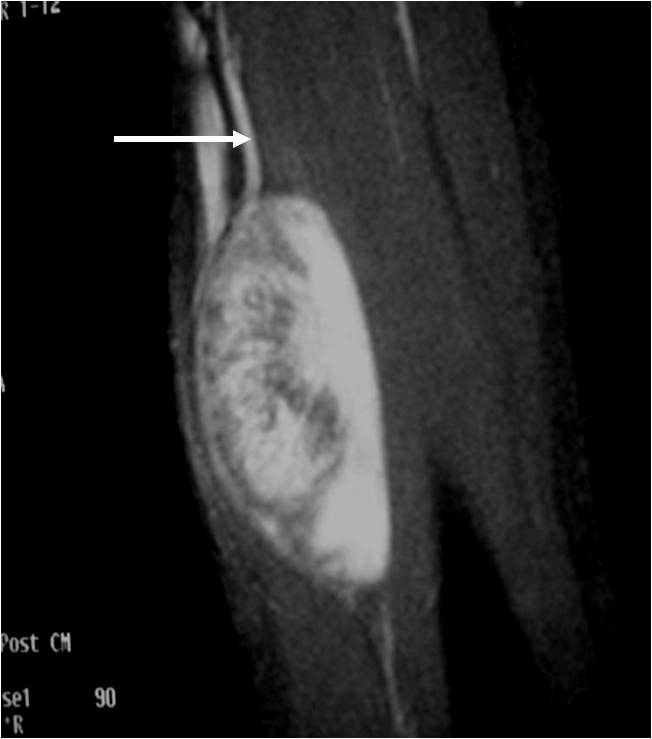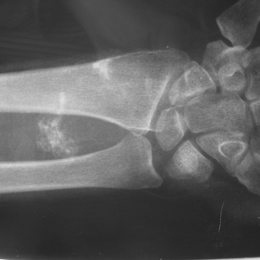What is Giant Cell Tumor of Tendon Sheath?
Giant Cell Tumor (GCT) of Tendon Sheath is a benign, or non-cancerous, tumor that can emerge from the tendon sheath or synovium. It most commonly affects the fingers and hand. It is the second most common benign, soft-tissue tumor of the hand. It is usually slow-growing and painless, and can be removed with surgery.
Who is usually affected?
- • The majority of cases occur between 30-50 years of age.
- • Slightly more common in women.
- • Fairly common soft-tissue mass.
Causes
- • The cause of GCT of tendon sheath is unknown.
Common Sites Involved
- • Hands and fingers
- • Feet and toes
Signs and Symptoms
- • Usually asymptomatic and painless, however individuals may notice a slow-growing mass.
- • Some patients may experience pain depending if the tumor is located near nerves or vessels.
Biological Behavior
- • Rarely involves the skin, yet GCT of tendon sheath may erode the bone.
- • GCT of tendon sheath does not metastasize, or spread throughout the body.
- • Very rare occurrence that the tumor may become malignant.
- • Recurrence may occur and is at a greater risk if it’s a diffuse and poorly encapsulated lesion, located distally, involves the extensor and flexor tendon of the joint, involved intraosseously, presence of satellite lesions, and/or pre-existing degenerative joint disease.
- • Rarely aggressive.
Diagnosis
- • The work-up for a Giant Cell Tumor of Tendon Sheath often consists of a physical examination, X-ray, and MRI scans. The diagnosis is often confirmed with a biopsy, which samples the tumor for further analysis.
Risk to your limbs
Giant Cell Tumor (GCT) of Tendon Sheath is a benign, or non-cancerous, tumor that can emerge from the tendon sheath or synovium. If left untreated, there is a risk that the mass will continue to grow and potentially erode an adjacent bone. This continuous growth will weaken the bone and perhaps cause it to break, which is called a pathological fracture. Without treatment, there is a rare risk that GCT of tendon sheath can become malignant (cancerous).
Radiographic imaging is used to help form a diagnosis of GCT of Tendon Sheath. These include X-Ray, MRI, CT and Bone Scans.
An example of an MRI is shown.

Treatment of Giant Cell Tumor of Tendon Sheath
The primary treatment for giant cell tumors (GCT) of tendon sheath is complete excision of the tumor. Additionally, if the mass returns, that too can be surgically removed. GCT of tendon sheath is a benign soft-tissue mass, therefore systemic treatment, such as chemotherapy, is not needed.
Surgery
Surgical treatment includes wide or radical resections to remove the complete tumor and additional margins. The removal of additional, surrounding margins ensures that the tumor is completely removed and decreases the chances of the tumor coming back.






